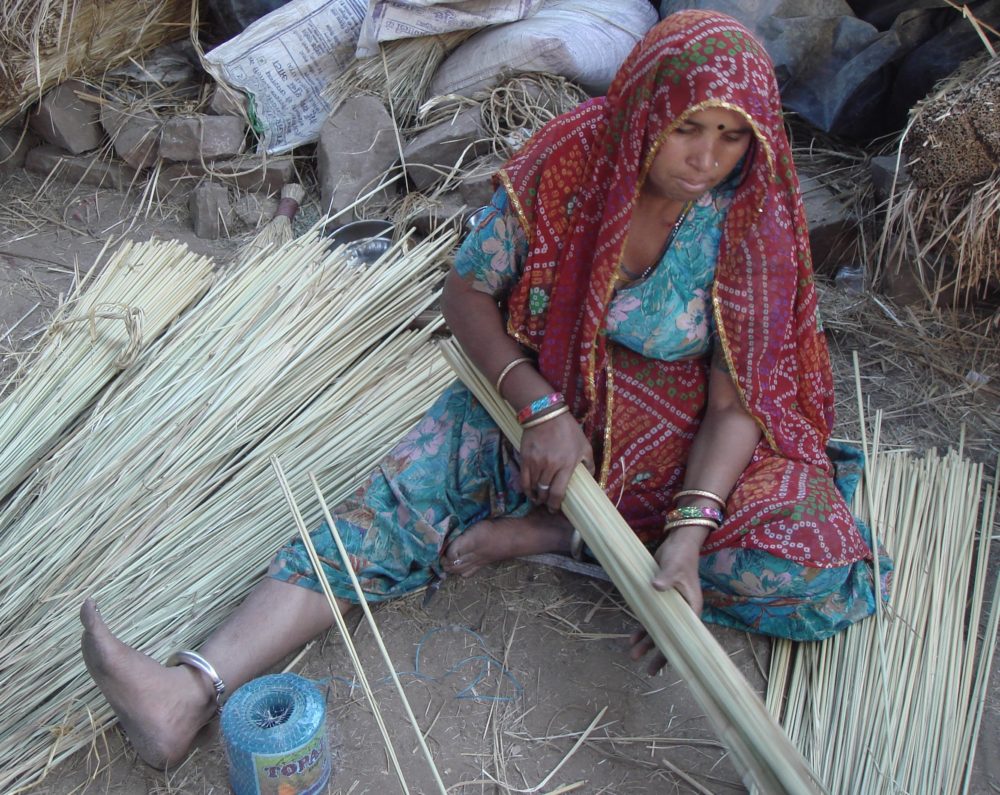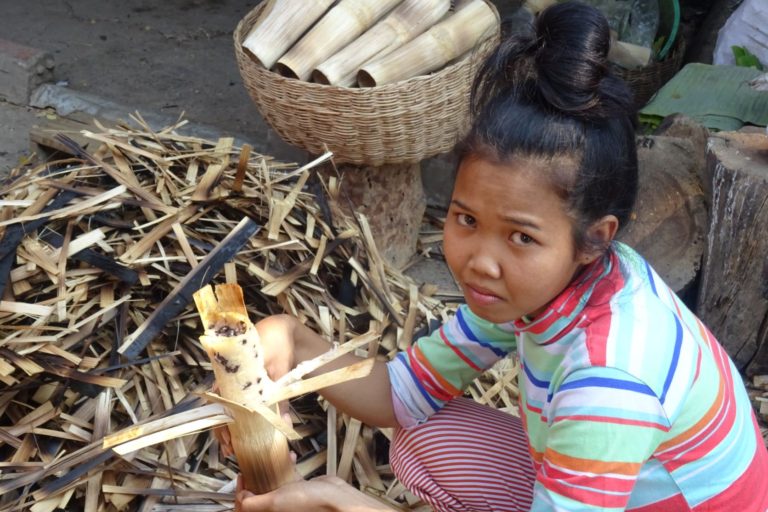By Neena Bhandari
Jodhpur (Rajasthan, India), 26.09.2011 (WFS): Lifting her translucent red tie and dye cotton veil, Sunder Devi, 45, dexterously sorts moonjh (Saccharum munja). Nearby her 14-year-old daughter, Kiran, niftily assembles them into brooms. Theirs is one of the 150 families in Jodhpur’s Banjara colony, whose livelihood depends on the humble broom.
Rural women in this western Indian state of Rajasthan have been making brooms from locally available materials to suit their own needs and also for commercial sale. Every three months, Sunder Devi’s husband, Gopal Bhai, goes to Alwar and Etah in the neighbouring state of Uttar Pradesh to buy moonjh.
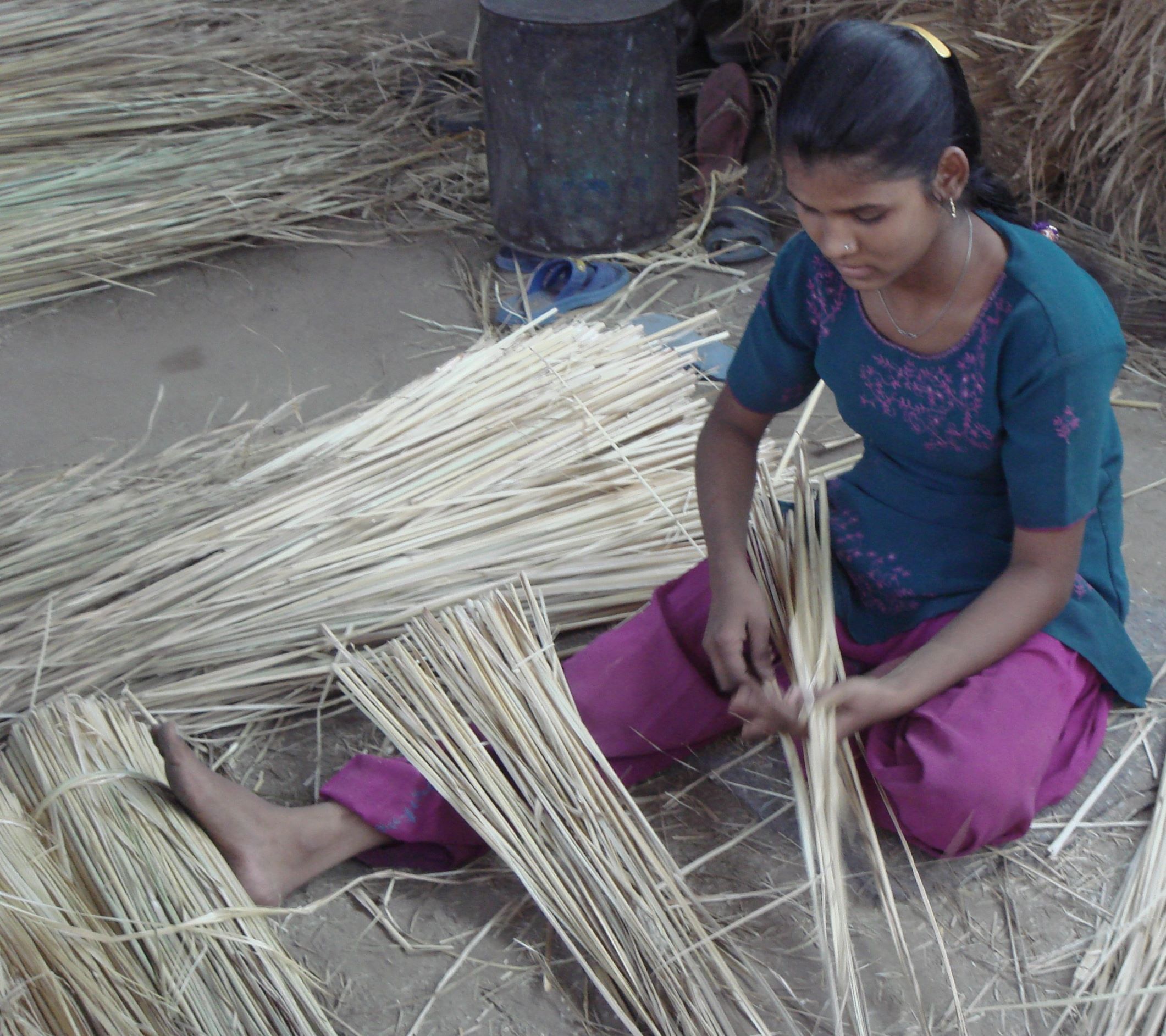
“We make three brooms from one kilogram of moonjh, which costs Rs 20, and sell each broom for about Rs 10. My family makes up to 150 brooms a day, working from dawn till dusk, except during monsoons when we can’t store the moonjh in the courtyard”, says Gopal bhai, whose family has been in this vocation for two generations.
The brooms, which are used for sweeping our homes, courtyards and city streets, have been an integral part of our lives since times immemorial. Even today, they are mostly handmade objects, exemplifying the endurance of pre-industrial labour in a steadily globalising Indian economy.
Broom-making requires skill, honed and perfected over generations, and swiftness in executing the process from beginning to end. The speed and efficiency are directly related to the number of brooms one can make each day, which in turn determines the family’s earning. The skilled amongst them earn up to Rs 300 and the unskilled make half that amount for the same hours of labour.
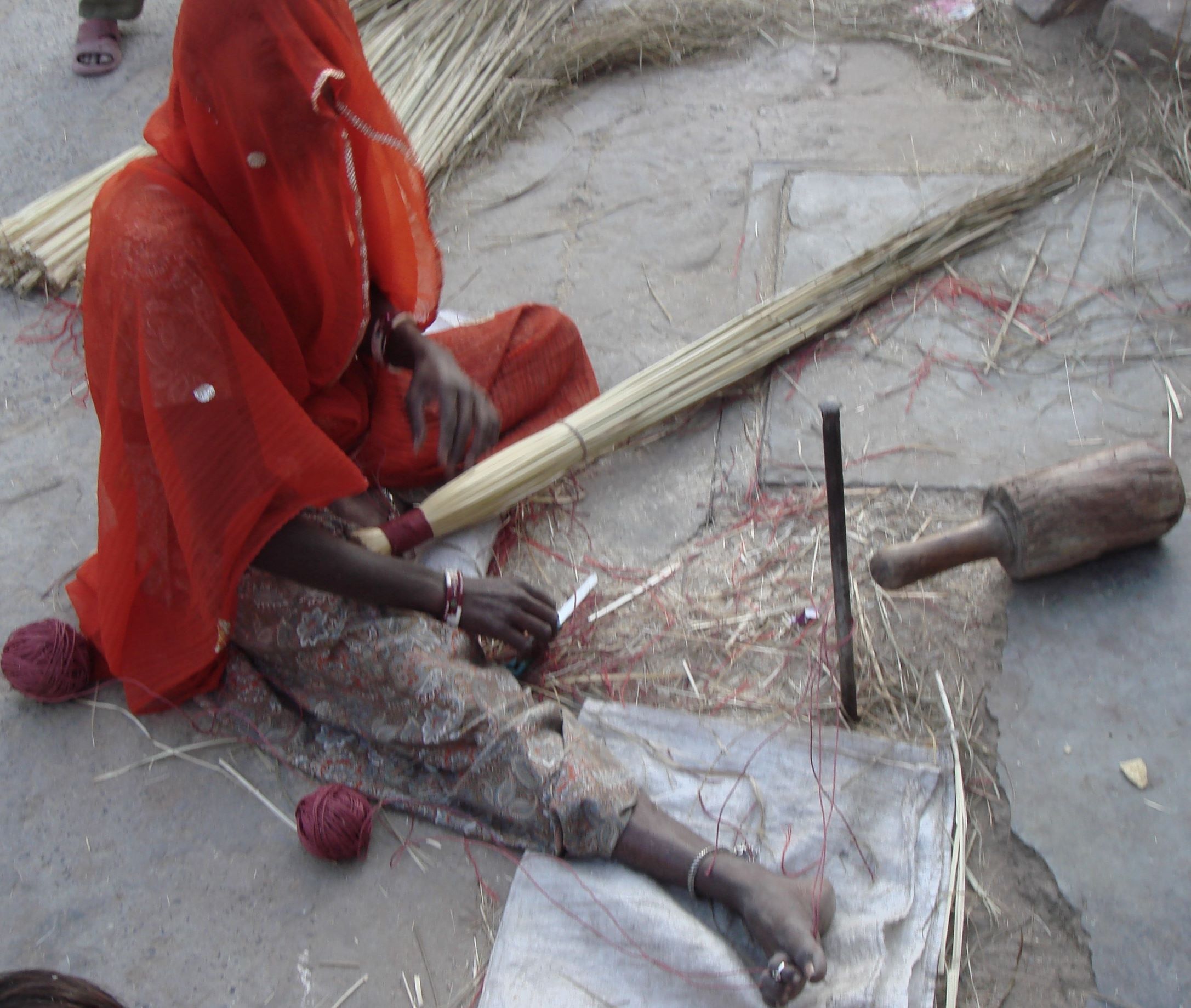
On the semi-tarred street of the colony, Sharda, 30, has spent the last 15 years of her life making brooms. As her fingers move swiftly with the precision of an expert, she says, “I make about 100 brooms a day and earn a meager sum for eight hours of work. There is lot of dust in this work. I would rather learn sewing, but with cheap readymade clothes flooding the market, tailoring jobs are difficult to find here”. Her little nieces, Komal, 6, and Rakhi, 7, are pounding the grass, contributing their bit.
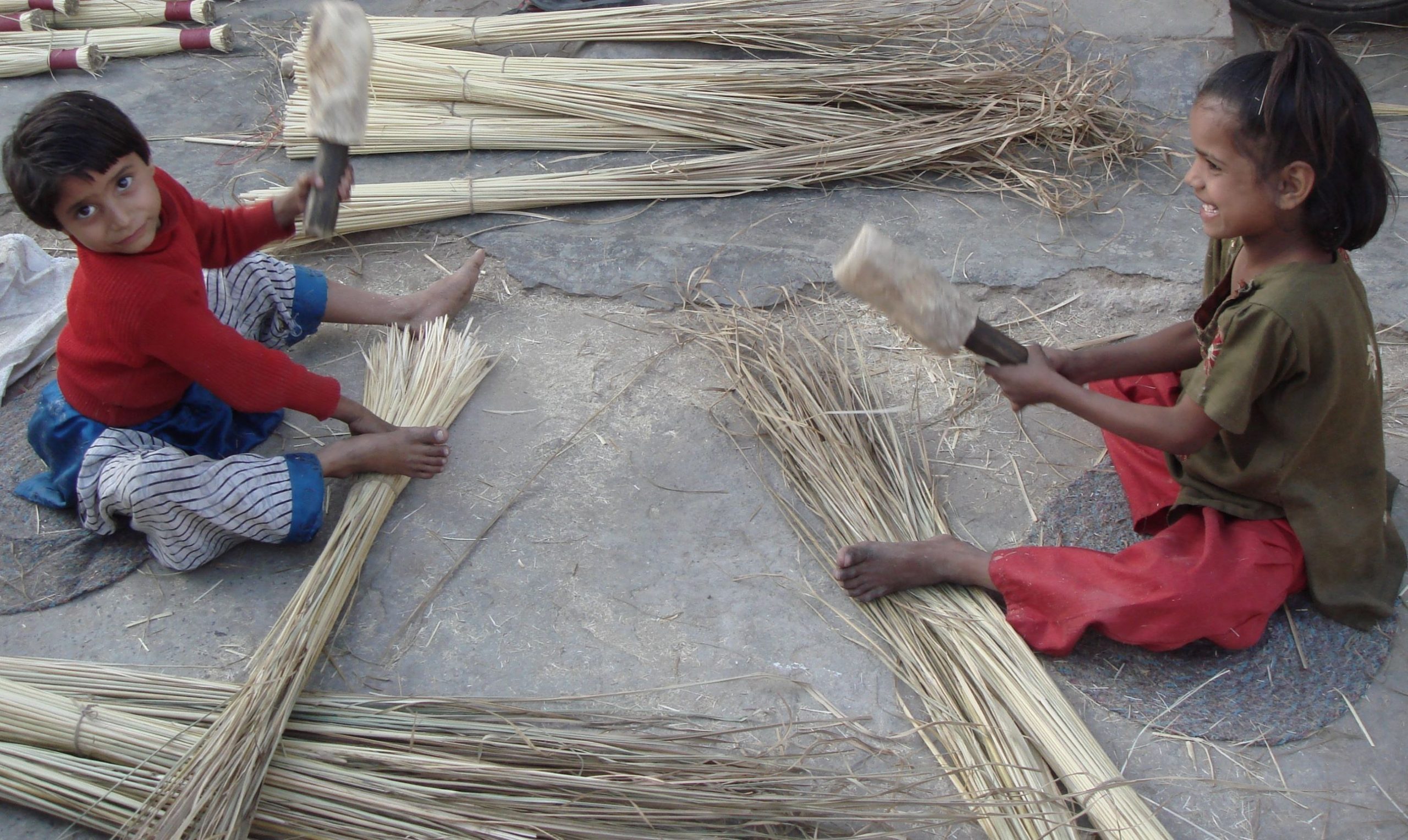
Most children in the family join in the broom-making process and often receive cuts and pricks from the sharp needle-like ends of the grass. “My younger sister, Lalita, 6, and brother Vishnu, 12, who is studying in class VIII, also help”, says Kiran, who has completed primary school and would rather study than join the family vocation.
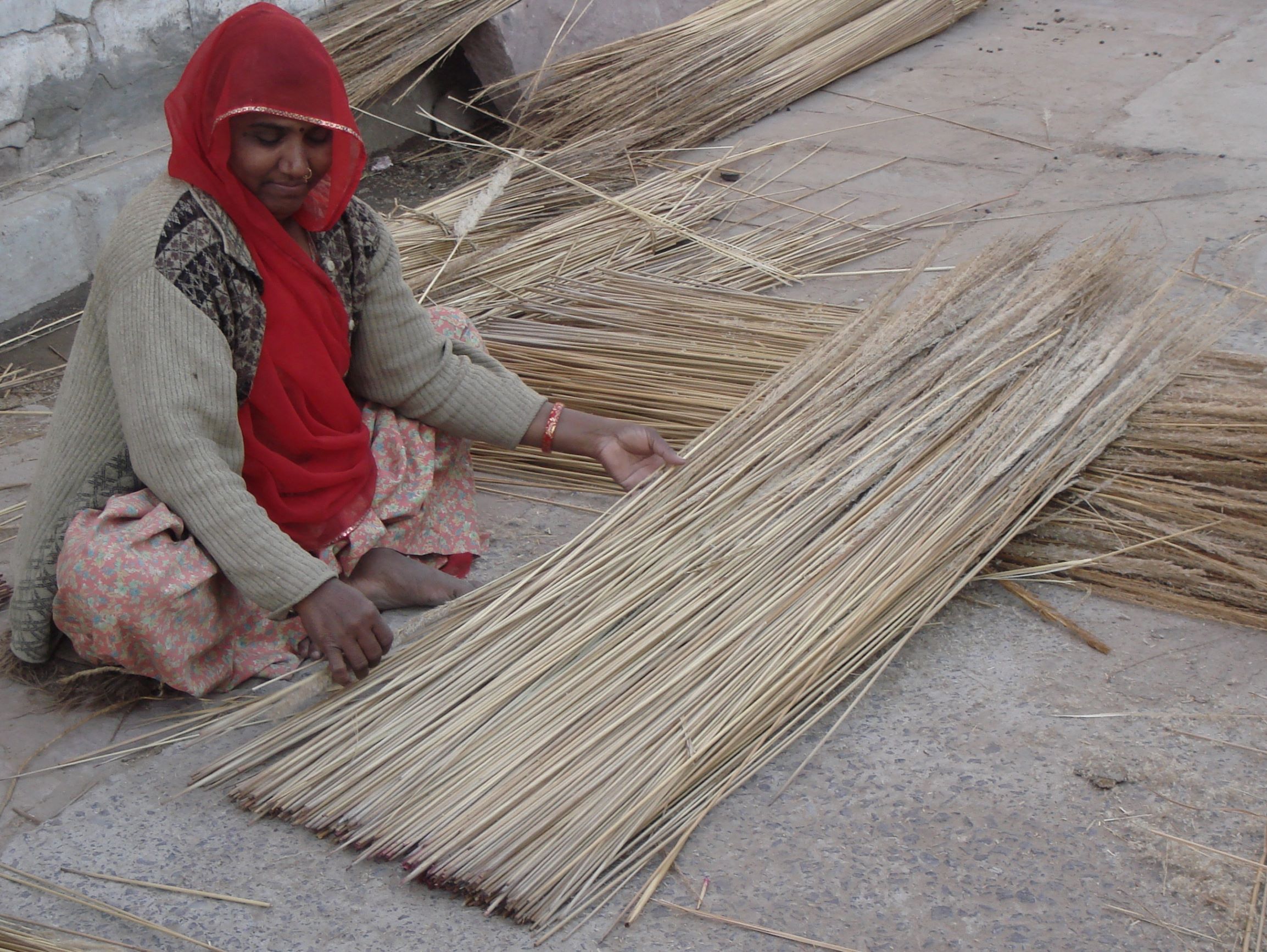
A few houses down, Puja, 17, who is studying in class 11, wants to pursue medicine and serve her community. Her mother, Rampati, 35, who has an allergy to the broom dust and suffers from severe itching says, “I only make about Rs 50 a day worth of brooms. My husband works as a labourer and supports our family of six”.
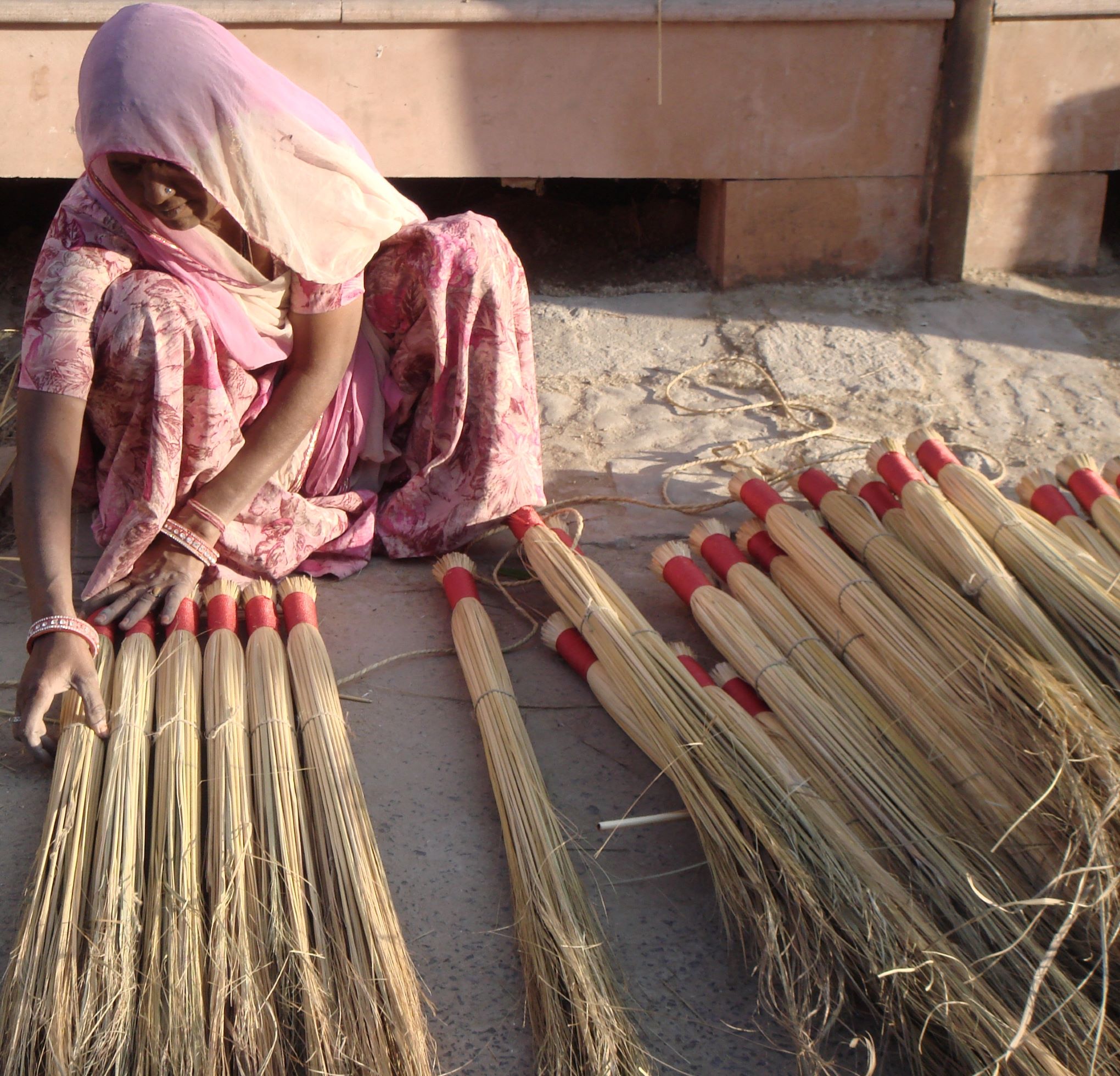
Some like Badami Devi, 52, work 12 hours a day for six months and make enough profit to survive the rest of the year. She employs other people and doesn’t want her daughters-in-law to join the family vocation.
Brooms come in almost 200 varieties. The moonjh, khajoor (Date palm) and bamboo are the most expensive grasses used in broom making. Jaitun Bai has been buying brooms from broom-makers in the colony for Rs 10 and selling them to households in Jodhpur city for Rs 12. “It is a small margin of profit for lot of walking at my age, but it is enough to feed myself”, says the 70-year-old.
Broom-makers, amongst the most economically depressed sections of the community, are generally identified with specific materials they use. While the Banjara community produces brooms made from moonjh; the migratory Koli community, originally from south India and the Bagariya community of Rajasthan use khajoor; and the Harijan community specializes in brooms made out of bamboo.
These different kinds of brooms, revealing the ingenuity and creativity of the rural folk in the state, have been exhibited in the Arna Jharna museum, 23 km from Jodhpur on the Jaisalmer Highway. The brainchild of internationally acclaimed folklorist, oral historian and co-founder of the Rupayan Sansthan in Jodhpur, late Komal Kothari, the museum has documented 160 kinds of brooms found in the state.
“We have made this collection to understand the relationship between the biodiversity of the desert and the lives of people inhabiting and surviving its harsh, yet nurturing environment”, says Rupayan Sansthan’s secretary, Kuldeep Kothari.
The broom and the rolling pin have long been an Indian woman’s two major weapons. Being struck by a broomstick is considered the ultimate insult. Brooms have also been associated with good and evil, rites and rituals. Myths, beliefs and stories about brooms and broom-making communities abound. They have been portrayed in poetry and films like the magical flying brooms in The Harry Potter series.
Each broom has a unique story to tell from cultivation to craft. In the exhibition, the types of brooms have been classified under the three different staple food zones of Rajasthan i.e. the Bajra, Jawar and Macca (Millet, Sorghum and Corn), which grow during the monsoons. The king of brooms used throughout urban India is the phool jhadu, which is manufactured in large quantities in Rajasthan. However, the reed from which the broom is made —Thysanolaena maxima — grows exclusively in the North-Eastern states. Ironically, the bamboo broom is lowest in the hierarchy in terms of its association with dirt and sewage, but it is sturdy and the most expensive of all brooms costing around Rs. 60 in the market. Brooms made from khajoor tree are largely used for sweeping the floors of outer spaces and courtyards.
“The brooms used inside are made of grass and generally have feminine names, for example, buari, whereas brooms used outside are made of shrubs and sticks and have male names. The material used often relates to the texture of the surface — open grounds, cow-dung floors, cement and marble floors — the broom is supposed to clean”, explains Kothari, pointing out that the broom economy in Rajasthan is estimated to be around Rs 200 crore.
While broom-making has been a hereditary vocation for the Banjaras, the younger generation is hoping to move to other educated professions. The older women though, confident in their craft, would rather stick to the traditional family vocation as working together on the same street also provides a platform for them to socialise and share their joys and sorrows.
© Copyright Neena Bhandari. All rights reserved. Republication, copying or using information from neenabhandari.com content is expressly prohibited without the permission of the writer and the media outlet syndicating or publishing the article.

